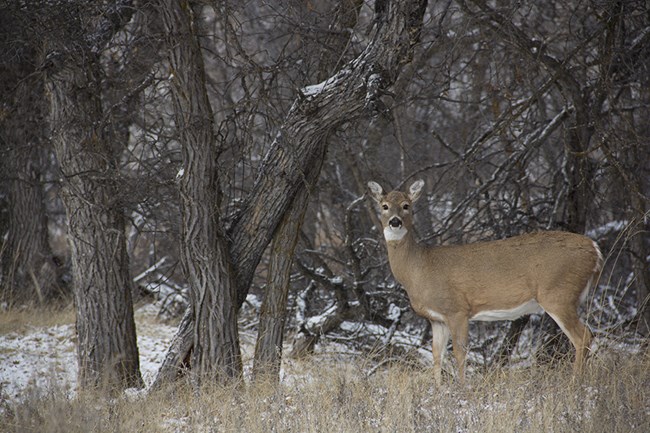
NPS Deer (Cervidae)Deer are the most common large animal seen here at Devils Tower. There are two species found at the park year round, the white-tailed and mule deer. Both of these animals can be seen near the park road or along the Tower Trail and other hikes. White-tailed deer (Odocoileus virginianus)
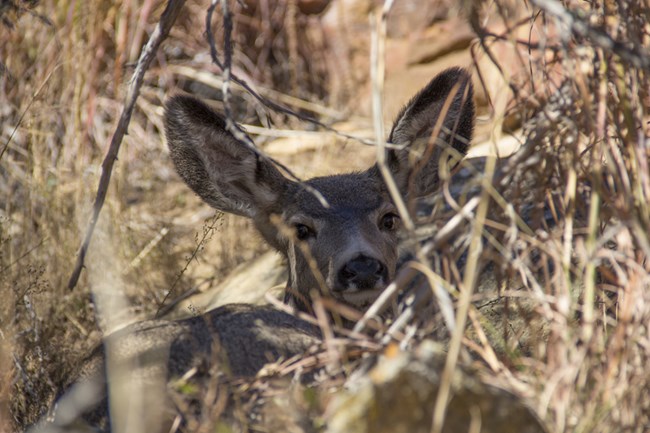
NPS Mule deer (Odocoileus hemionus)
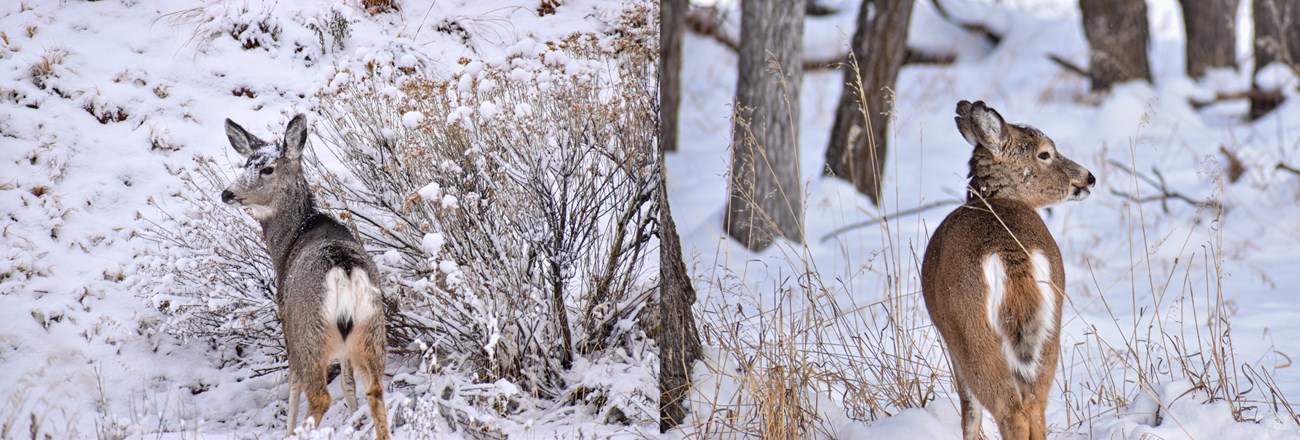
NPS Difference Between Mule Deer and White-Tailed DeerThe best way to determine whether you have a white tail deer or a mule deer is to look at their face and hind end.
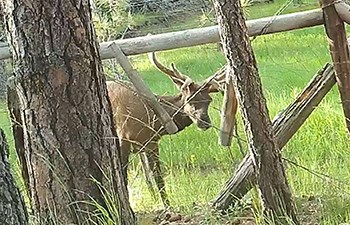
NPS trail cam Elk (Cervus canadensis)
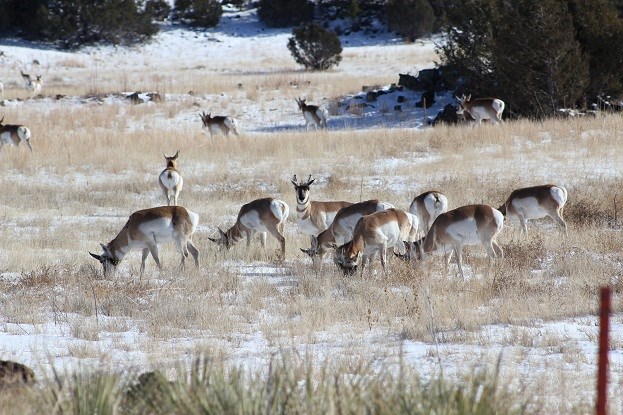
NPS Other Hoofed AnimalsPronghorn (Antilocapra americana)Commonly called antelope, pronghorn are unique to North America and are not related to antelope at all. In fact, their closest living genetic relative (though still distant) is the giraffe! They do fill a similar ecological role as antelope found in Africa. Although not commonly seen within park boundaries, you will likely see them in open fields along highways as you travel the area.
Bison (Bison bison)Despite the historic numbers of bison that were in the area in the past, bison are not found in the park today. Any bison you see in the area are members of local ranch herds. Wind Cave National Park and Custer State Park in South Dakota both maintain wild bison herds. Bighorn sheep (Ovis canadensis)Bighorn sheep have historically been in or near Devils Tower National Monument. They are no longer seen in the park. Bighorns were reintroduced to Badlands National Park in South Dakota, as well as in the Black Hills, and can be seen at sites like Jewel Cave National Monument. |
Last updated: September 9, 2025
